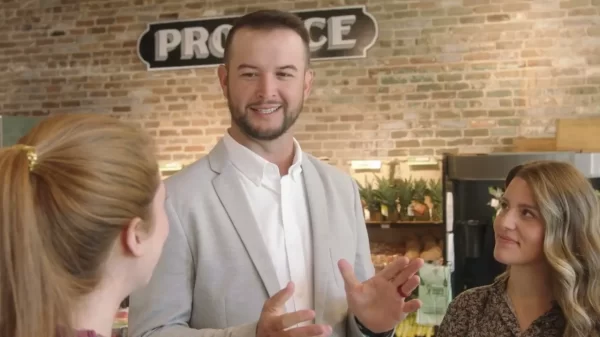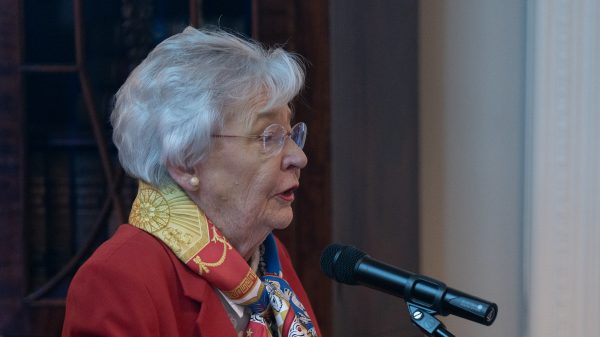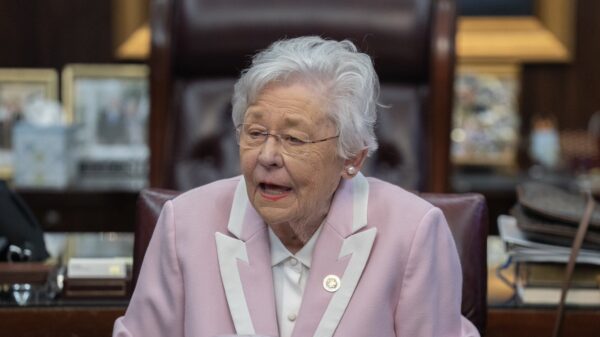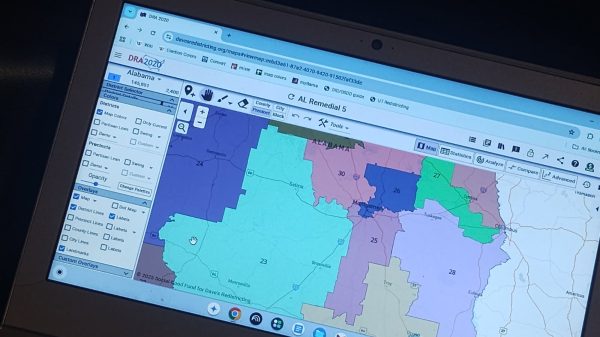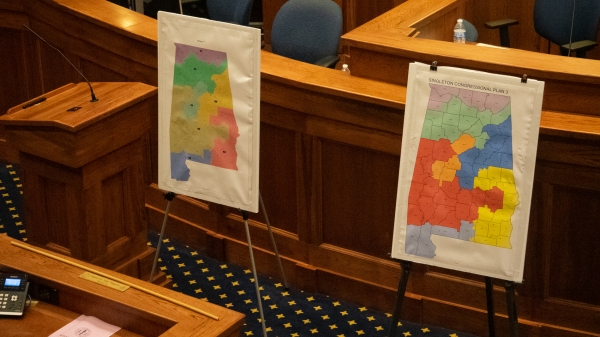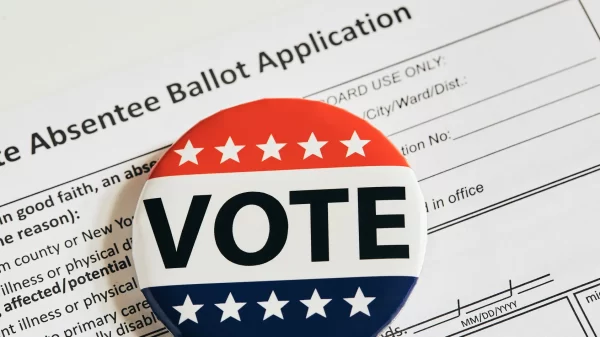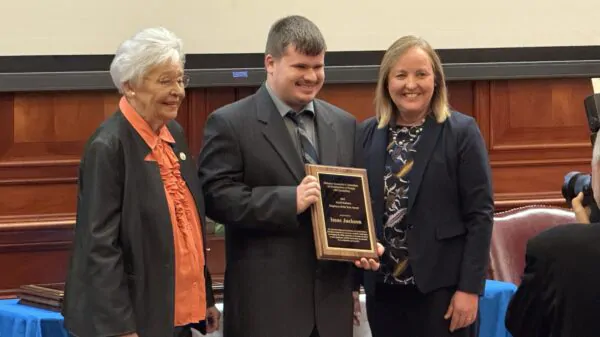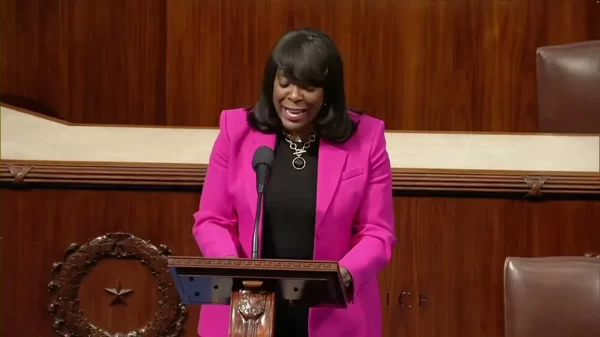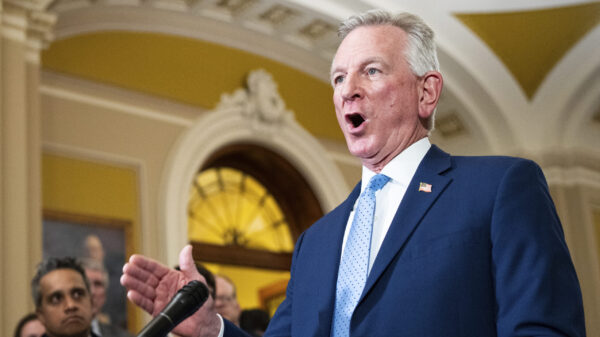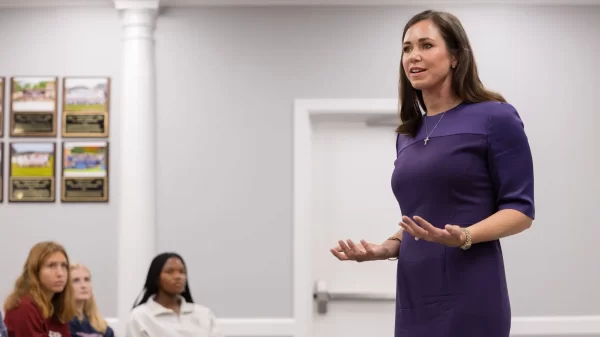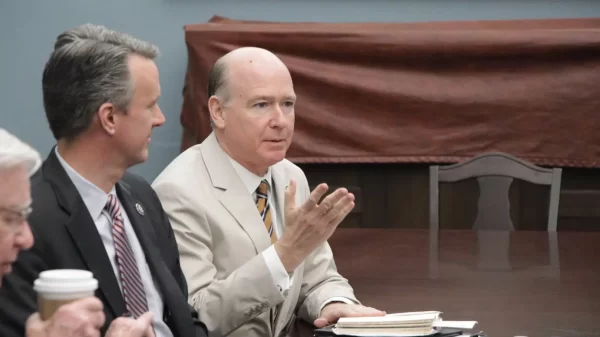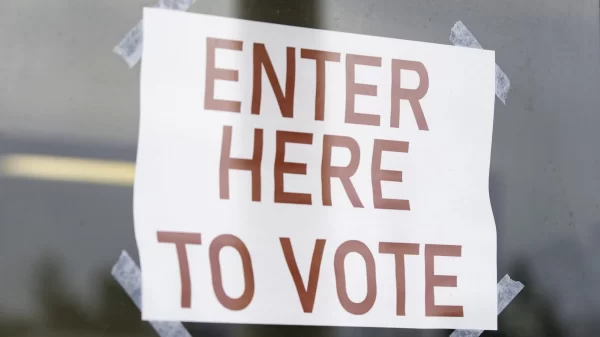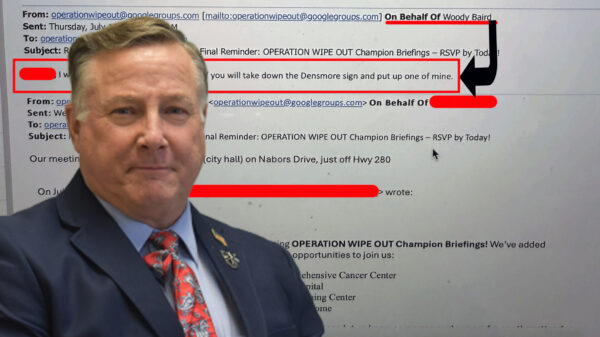A new report from the healthcare nonprofit Trust for America’s Health, or TFAH, raises concerns about how proposed and enacted federal funding cuts will impact public health.
The report, entitled “Public Health Infrastructure in Crisis,” included interviews with leading state public health officials, including the head of the Alabama Department of Public Health.
TFAH is a nonpartisan nonprofit public health policy research and advocacy organization.
In a Wednesday media briefing ahead of the report’s release, panelists discussed the study’s findings regarding the projected impacts of workforce and funding cuts, as well as reorganizations for the U.S. Department of Health and Human Services.
The panel was composed of TFAH President and CEO Dr. J. Nadine Gracia, CEO of the Association of State and Territorial Health Officials Dr. Joseph Kanter and CEO of the National Association of County and City Health Officials Lori Tremmel Freeman.
“For over two decades, TFAH has authored an annual report tracking public health funding, and for this year’s report, we took a different approach due to the scale, scope and potential impacts of federal actions and proposed actions affecting the public health system,” Gracia said.
Gracia explained that the report focuses on HHS funding, particularly for the Centers for Disease Control and Prevention.
TFAH reported that 80 percent of the CDC’s domestic budget funding flows to states, localities, tribes, territories, healthcare systems and community partners.
TFAH’s report highlighted the White House Office of Management and Budget’s proposed 53 percent budget reductions for the CDC and Agency for Toxic Substances and Disease Registry, when compared to FY24.
The OMB also proposed a 52 percent reduction in funding for the CDC’s Public Health Emergency Preparedness program.
“[The Public Health Emergency Preparedness program] is a program that’s the primary source of federal funding for state and local emergency preparedness,” Gracia said. “These cuts would make communities across the country less prepared for outbreaks, as well as natural disasters such as hurricanes, floods, wildfires and heatwaves, at a time when the frequency and intensity of such events are increasing.”
Gracia cited the report’s finding that the additional cuts proposed by the OMB would amount to an approximate 39 percent net reduction in CDC resources and activities.
Both the U.S. Senate and House Committees on Appropriations have presented lesser cuts than those proposed by OMB in their respective versions of the Health and Human Services, Education, and Related Agencies Appropriations Act budget proposals.
The House proposal would cut $1.7 billion from the CDC, setting total funding at $7.4 billion, while the Senate proposed a lesser cut of $70 million, for a total budget of roughly $9.2 billion.
The White House proposal, meanwhile, would provide roughly $4.3 billion for the agency in FY26.
The Trump administration has also proposed moving roughly 26 percent of funding lost by the CDC and ATSDR to newly proposed HHS divisions, the Administration for a Healthy America and the Office of Strategy.
“The structure and capacities of these two entities are unknown at this point,” Gracia said. “The proposed restructuring of HHS agencies would reduce the number of staff positions working across the department by 16 percent, even when accounting for the creation of a new Administration for a Healthy America.”
“We’re already seeing how cuts to federal funding impact public health across the country,” Gracia added.
The TFAH report highlights the termination of roughly $12 billion in previously approved COVID-19 era grants in March, supporting pandemic response and aimed at strengthening public health infrastructure “beyond the needs created by the pandemic.”
TFAH’s report includes comments from Alabama State Health Officer Dr. Scott Harris explaining how ADPH has been impacted by federal cutbacks.
“We are about two-thirds federally funded. If you also consider clinical revenue, mostly through Medicaid, we are about 90 percent federally funded. State money accounts for less than 10 percent of our overall budget,” Harris said.
When asked if his department was forced to make staffing cuts due to the federal funding revision earlier this year, Harris explained while “in many instances” the department was able to find other grants and programs for employees to work with when their grants were pulled, reductions in force were necessary at ADPH due to the end of COVID-era grants.
“The cuts that we learned about in April amounted to about a $190 million hit to our agency that happened overnight and without any warning,” Harris explained. “We came to work on a Tuesday morning and found out that a number of grants had been taken away the day before, which meant that we had about 140 FTEs [full-time equivalents] showing up for work that we no longer had a funding source for their salaries.”
“These were grants that we first received as part of COVID funding, but they weren’t just COVID grants. They were grants that applied to epidemiology, laboratory capacity, and infection control,” he said. “For example, we were working with nursing homes on infection control practices; we worked with hospitals around the state to help train their teams on infection control.”
Harris also explained how funding cuts for public health may negatively impact both essential services and preparedness for unexpected public health crises, such as the COVID-19 pandemic.
“We will be less prepared. I don’t think there’s any question about that. Most of what we do in public health is behind the scenes,” he said. “People go out to eat and don’t worry about getting sick or drink tap water and aren’t concerned about it being unsafe. The reason for all of these things is public health.”
“When we lose the ability to do these things because our funding goes away, there will be negative consequences,” Harris added.
Harris also explained that his organization has grown concerned regarding the impacts the loss of rescinded grants will have on statewide health emergency preparedness.
“Human history has shown us that there is going to be something coming down the track. It’s inevitable that we will need to have another large-scale response. We can’t predict what it will be. Without people working here to plan for these events, we are not going to be as well prepared,” he said.
Harris went on to say that he wished ADPH had received more communication from the federal government in 2025, as well as more opportunities for input regarding the restructuring and movement of CDC programs.
“We fully expect that when there’s a transition at the national level there will be changing priorities. That’s how our system works,” said Harris. “The new administration gets to set the agenda. We respect that and want to work with that. But what we need is something orderly, and what we would love is for someone to consult with us.”
Alongside his work at ADPH, Harris has served as the 2025 President of the Association of State and Territorial Health Officials.
The state health officer said that members of ASTHO have expressed concerns regarding potential changes to CDC guidelines, and the impacts of CDC funding and programs potentially being shifted to newly developed agencies.
“A lot of people are worried about what will happen with immunization guidance, for example. A lot of us are unsure what to make of a new agency that is going to move programs that were traditionally housed at CDC,” he explained. “You would think that it will need to use the subject matter experts who were once employed at CDC. That’s who the subject matter experts are, but it’s really unclear. We don’t know if those people are still employed; we don’t know what funding is going to be attached to specific programs.”
“It’s not even possible to think that my state is going to replace the amount of federal funding that seems to be at risk,” Harris said when asked if he believed state health departments will have to be more self-reliant in addressing public health moving forward.
“Yes, states are going to need to be more self-reliant, but what they are going to be able to do is going to be diminished,” he continued.
TFAH’s report emphasized that proposed cuts in the White House’s budget request, as well as proposed and implemented restructurings at the CDC, would widen health disparities, with rural and underserved communities being “particularly affected.”
When asked to explain how proposed funding cuts would impact rural communities, panelists emphasized the importance of public health funding in bridging gaps in care access, often more acute in rural areas.
“Food-borne illness, hospital-acquired infections, thousands of others—those threats are no less acute in rural communities, but the resources present to help protect against those are likely less robust,” said Kanter.
Kanter went on to describe how state health departments often seek to correct disparities in rural healthcare through programs such as public health clinics, transportation services and partnerships with local health providers.
“These are really important activities that when the overall structure of public health is threatened, or even when it’s just unpredictable, and unstable as [it] has been the past few months, it becomes harder for health departments to work with local communities to address those issues,” he remarked.
“Our rural communities are vulnerable, and instability in the public health infrastructure and the funding network that supports that will affect rural communities disproportionately,” Kanter continued.
Freeman also emphasized the importance of federal funding in closing rural healthcare gaps.
“Rural communities need as much attention as large and medium-sized communities and often even more because the problems are different in rural communities and they’re different in terms of accessibility services, in terms of chronic disease prevalence and in terms of provider availability and specialty services,” said Freeman. “Something that really needs to be watched at all times is ensuring that we don’t leave additional gaps in our delivery of programs and services to those communities, and funding is always front and center because it takes more money to reach rural communities, often.”



